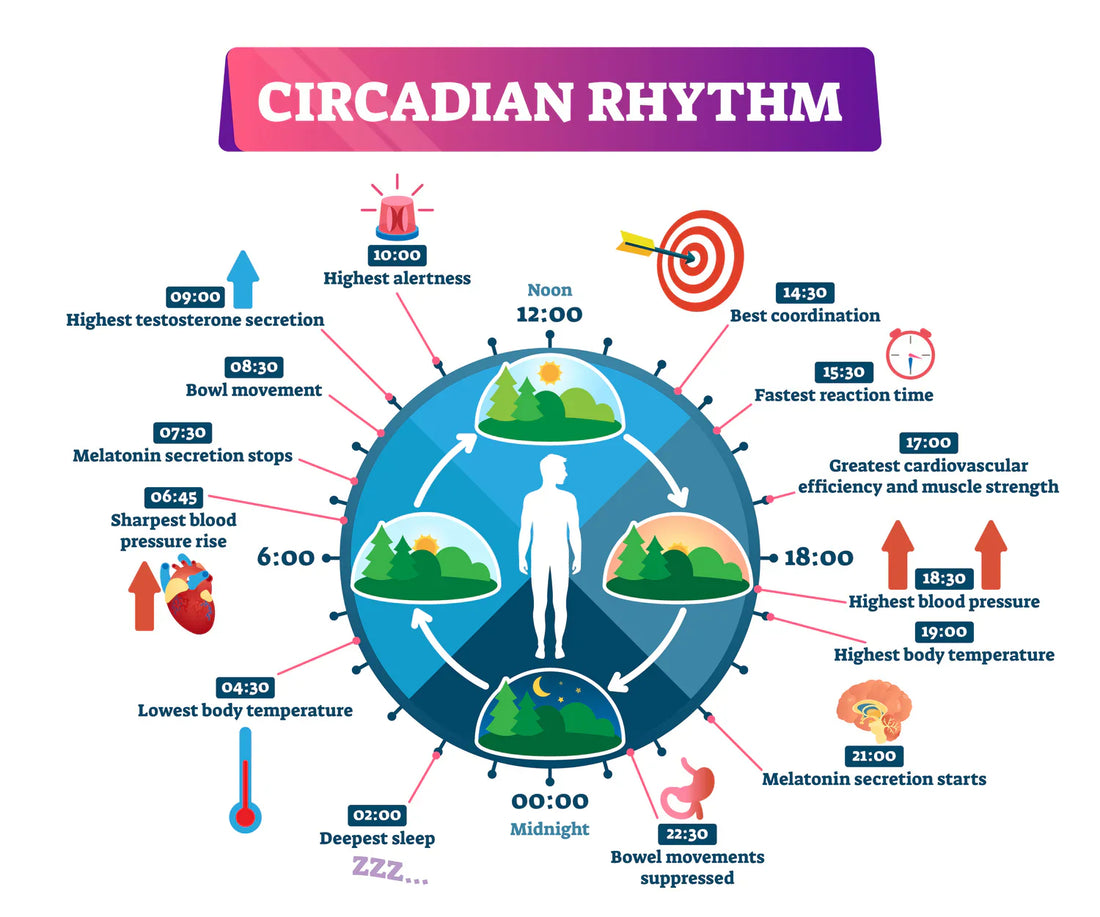
Why Morning Light Is the Most Powerful Hormone Regulator You Have
Most people think hormones are only influenced by food, stress, or supplements.
But one of the strongest hormonal regulators in your body isn’t something you eat or take — it’s sunlight.
Your hormones follow a 24-hour pattern called the circadian rhythm, and morning light is the signal that synchronizes that entire system — from energy and mood to metabolism and sleep.
☀️ The Light Switch That Starts Your Day
When natural sunlight enters your eyes in the morning, it sends a direct signal to your suprachiasmatic nucleus (SCN) — your body’s “master clock” located in the brain’s hypothalamus.
This sets off a cascade of biological responses that:
-
Increase cortisol (in a healthy way) to wake you up
-
Boost dopamine and serotonin for focus and mood
-
Suppress melatonin to reset your sleep cycle for the night ahead
This morning light cue tells every cell in your body what time it is — aligning your hormones, metabolism, and even digestion with the solar rhythm.
Without it, your system drifts — leading to fatigue, poor sleep, mood swings, and hormonal imbalances.
🔄 Circadian Rhythm: Your Body’s Built-In Timing System
Every hormone you produce — cortisol, estrogen, thyroid hormones, insulin, melatonin — operates according to your internal clock.
-
Morning light kickstarts cortisol and serotonin (daytime energy).
-
Afternoon sunlight supports dopamine and productivity.
-
Evening darkness triggers melatonin (rest and repair).
Disrupting this light-dark cycle through indoor living or late-night screen exposure confuses your biology, creating what researchers call “circadian misalignment.”
Over time, this is linked to issues like weight gain, sleep disorders, and hormonal resistance (Bass & Lazar, Science, 2016).
🌞 Why Natural Light Outperforms Artificial Light
Artificial lighting — even bright indoor LEDs — lacks the full solar spectrum and intensity needed to properly entrain your circadian rhythm.
Morning sunlight contains blue and red wavelengths in perfect balance, both crucial for signaling your hormones and supporting mitochondrial energy production (LeGates et al., Nature Reviews Neuroscience, 2014).
When you expose your eyes (without sunglasses or glass between you and the sun) to this light, photoreceptors in your retina — especially melanopsin cells — send signals that reset your biological timekeeper.
It’s nature’s way of saying, “Wake up, recharge, and align.”
💧 Water, Light, and Hormonal Flow
Quantum biology teaches us that water inside your body acts as a conductor of light and frequency.
When morning light enters your system, it interacts with the structured water in your cells, optimizing energy flow and communication between glands.
By pairing structured, mineral-rich hydration (like AuroLiquidGold) with morning sunlight, you’re supporting your hormones at their foundation — restoring natural coherence between light, water, and biology.
🌅 How to Set Your Circadian Rhythm Naturally
-
See the sunrise. Spend 5–15 minutes outdoors within an hour of waking. No sunglasses, no glass.
-
Hydrate before caffeine. Drink mineral-rich water first — it primes your cellular circuits.
-
Avoid bright screens before bed. Give your brain darkness so melatonin can rise naturally.
-
Step outside again at sunset. The amber light cues your body for rest and regeneration.
✨ The Takeaway
Your hormones don’t just respond to food or supplements — they respond to light.
Morning sunlight is your body’s original signal for balance, energy, and hormonal harmony.
When you combine natural light exposure with structured hydration through AuroLiquidGold, you’re not just starting your day — you’re syncing with the rhythm of life itself.
📚 Scientific References
-
Bass, J., & Lazar, M. A. (2016). “Circadian time signatures of fitness and disease.” Science.
-
LeGates, T. A. et al. (2014). “Light as a central modulator of circadian rhythms, sleep and affect.” Nature Reviews Neuroscience.
-
Panda, S. (2016). The Circadian Code. Rodale Books.
-
Cajochen, C. et al. (2005). “Role of blue light and the human circadian system.” Journal of Sleep Research.
-
Pollack, G. H. (2013). The Fourth Phase of Water. Ebner and Sons.
